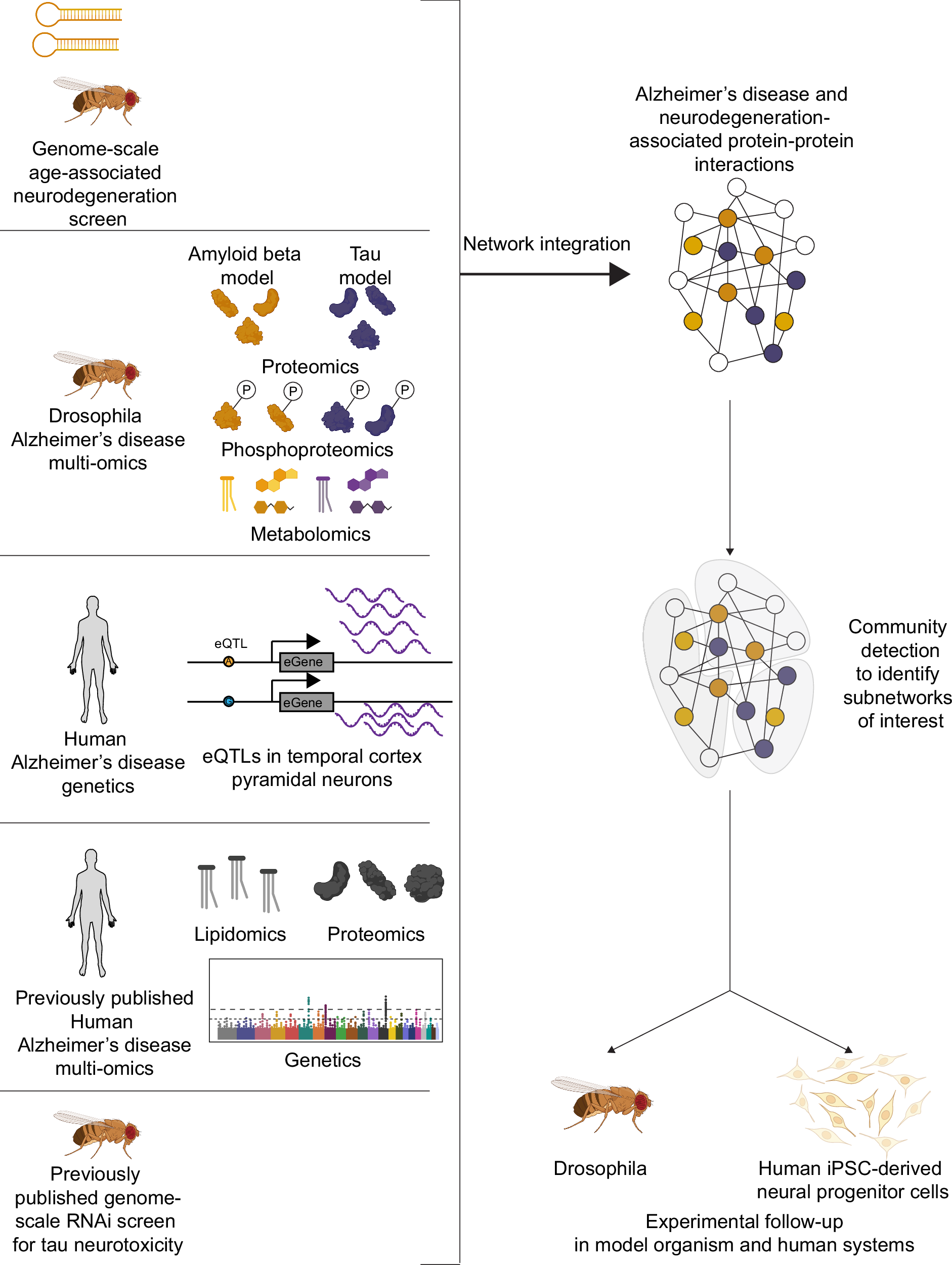2025-05-20 マサチューセッツ工科大学(MIT)
<関連情報>
- https://news.mit.edu/2025/scientists-discover-potential-new-targets-alzheimers-drugs-0520
- https://www.nature.com/articles/s41467-025-59654-w
統合システム生物学的アプローチによりアルツハイマー病神経変性のメカニズムが解明される An integrative systems-biology approach defines mechanisms of Alzheimer’s disease neurodegeneration
Matthew J. Leventhal,Camila A. Zanella,Byunguk Kang,Jiajie Peng,David Gritsch,Zhixiang Liao,Hassan Bukhari,Tao Wang,Ping-Chieh Pao,Serwah Danquah,Joseph Benetatos,Ralda Nehme,Samouil Farhi,Li-Huei Tsai,Xianjun Dong,Clemens R. Scherzer,Mel B. Feany & Ernest Fraenkel
Nature Communications Published:20 May 2025
DOI:https://doi.org/10.1038/s41467-025-59654-w

Abstract
Despite years of intense investigation, the mechanisms underlying neuronal death in Alzheimer’s disease, remain incompletely understood. To define relevant pathways, we conducted an unbiased, genome-scale forward genetic screen for age-associated neurodegeneration in Drosophila. We also measured proteomics, phosphoproteomics, and metabolomics in Drosophila models of Alzheimer’s disease and identified Alzheimer’s genetic variants that modify gene expression in disease-vulnerable neurons in humans. We then used a network model to integrate these data with previously published Alzheimer’s disease proteomics, lipidomics and genomics. Here, we computationally predict and experimentally confirm how HNRNPA2B1 and MEPCE enhance toxicity of the tau protein, a pathological feature of Alzheimer’s disease. Furthermore, we demonstrated that the screen hits CSNK2A1 and NOTCH1 regulate DNA damage in Drosophila and human stem cell-derived neural progenitor cells. Our study identifies candidate pathways that could be targeted to ameliorate neurodegeneration in Alzheimer’s disease.


